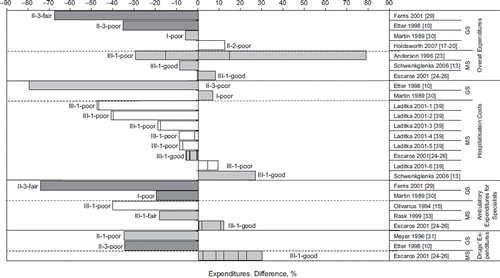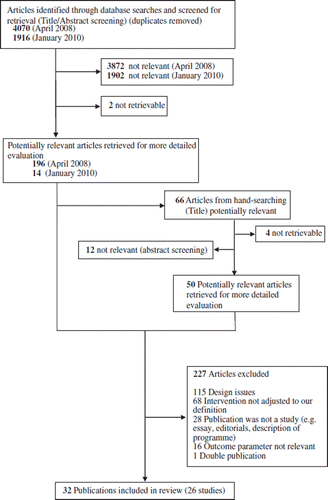Figures & data
Table I. Overview of included studies.
Figure 2. Percentage difference in gatekeeping arrangements (vs. free access) for health- and patient-related outcomes (symptoms, fatalities, quality of life, satisfaction).
Notes: Dark grey bars indicate statistically significant results, grey bars indicate results that are not statistically significant, and white bars indicate that the study did not report significance. A lack of bars indicates that there was no difference. Studies are grouped according to level of evidence (GS: greatest suitability; MS: moderate suitability), and labelled with their quality assessment. $: Study reported “no significant differences” but no data were provided to calculate percentage difference. PTCA: percutaneous transluminal coronary angiography; CABG: coronary artery bypass graft; MI: myocardial infarction.
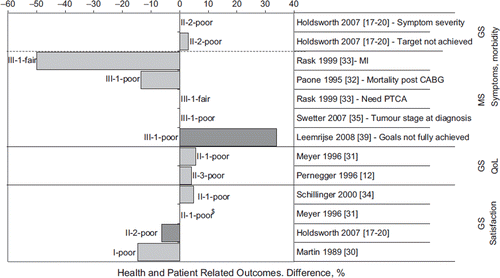
Figure 3. Percentage difference in gatekeeping arrangements (vs. free access) for quality of care parameters.
Notes: Dark grey bars indicate statistically significant results, grey bars not statistically significant results, and white bars indicate the study did not report significance. Lack of bars indicates no difference at all. Studies are grouped according to level of evidence (GS: greatest suitability; MS: moderate suitability) and labelled with their quality assessment.
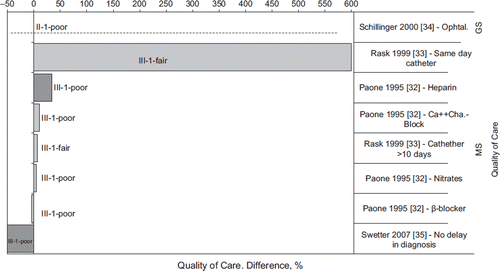
Figure 4. Percentage difference in gatekeeping arrangements (vs. free access) for length of stay and hospitalizations.
Notes: Dark grey bars indicate statistically significant results, grey bars indicate not statistically significant results, and white bars indicate the study did not report significance. Studies are grouped according to level of evidence (GS: greatest suitability; MS: moderate suitability) and labelled with their quality assessment. $: Study reported “length of stay remained stable in both cohorts” but no data were provided to calculate percentage difference. Multiple segments within a bar indicate results for subgroups, which may differ in their direction, magnitude and statistical significance.

Figure 5. Percentage difference in gatekeeping arrangements (vs. free access) for visits to primary care physicians, to specialist physicians, and to the emergency department.
Notes: Dark grey bars indicate statistically significant results, grey bars indicate not statistically significant results, and white bars indicate the study did not report significance. Lack of bars indicates no difference at all. Studies are grouped according to level of evidence (GS: greatest suitability; MS: moderate suitability) and labelled with their quality assessment. PCP: Primary care physician. Multiple segments within a bar indicate results for subgroups, which may differ in their direction, magnitude, and statistical significance.
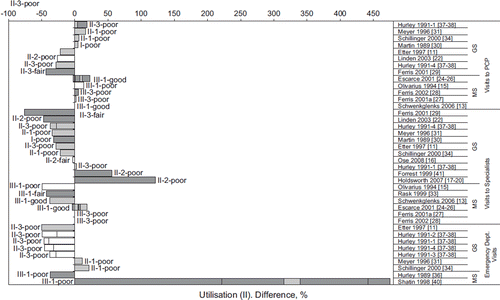
Figure 6. Percentage difference in gatekeeping arrangements (vs. free access) for expenditures (overall expenditures, hospitalization costs, expenditures for ambulatory specialist care, and drug expenditures).
Notes: Dark grey bars indicate statistically significant results, grey bars indicate not statistically significant results, and white bars indicate the study did not report significance. Studies are grouped according to level of evidence (GS: greatest suitability; MS: moderate suitability) and labelled with their quality assessment. Multiple segments within a bar indicate results for subgroups, which may differ in their direction, magnitude, and statistical significance.
